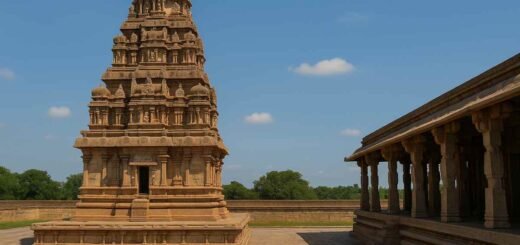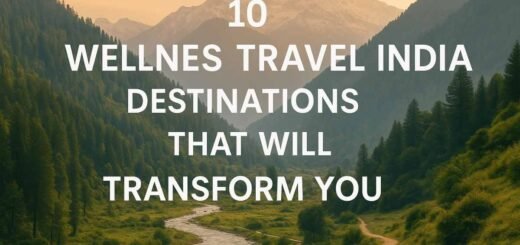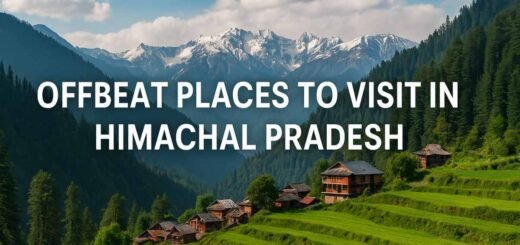7 Hidden Gems in India You Must Explore in 2025
Hidden Gems India: Discover 7 secret places off the beaten path + travel tips. Explore new India in 2025 — plan your escape now!
Hidden Gems India are those offbeat destinations seldom visited by mainstream tourists. In 2025, travelers increasingly seek authenticity, solitude, and raw landscapes. Let me take you through 7 Hidden Gems in India — places that feel like secrets — and show you how to reach them, what to do, when to visit, and travel tips you won’t find in generic guides.
Contents
Quick Facts at a Glance
| Gem | State / Region | Best Time to Visit | Travel Note |
|---|---|---|---|
| Yana | Karnataka | October to February | Moderate trek through forest |
| Silent Village (e.g. remote hamlet) | Kerala (Wayanad area) | November to March | Stay in homestays, local guides |
| Hidden Waterfall X | (State) | Monsoon + Post-monsoon | Use local transport or jeeps |
| Remote Island / Islet | (State) | December to February | Access by boat |
| Offbeat Plateau / Hillock | (State) | Winter and pre-summer | Permits may be needed |
| Cave Temple / Rock outcrop | (Region) | September to April | Be prepared with flashlights |
| Lesser-known Cultural Village | (State) | All year (avoid heavy rains) | Engage with local hosts |
How to Reach
- Nearest Airport / Railhead: For each gem, identify the closest major city or airport.
- Road / Local Transport: From the hub, use state buses, taxis, or shared jeeps.
- Last-mile Access: In many cases, trails, forest roads, or boat rides are involved — hire local guides.
Best Time to Visit
- Dry seasons (winter to early summer) are safer for trekking, forest paths, and boat navigation.
- Avoid peak monsoon if roads are landslide-prone.
- For waterfalls, visit in or just after monsoon to see full flow.
Best Things to Do
1. Trekking & Nature Walks
Most hidden gems involve walking through forests, hills, riverbanks, or trails. Carry light gear, water, snacks, and binoculars for birds.
2. Local Homestays & Village Immersion
Stay with local families. Observe traditional crafts, food, storytelling, and village life.
3. Photography & Sunrise / Sunset
These places often shine at dawn or dusk. Capture panoramic views, mist over hills, river reflections.
4. Water Activities
If there are rivers, creeks, or lakes nearby — kayaking, fishing, or guided boat rides can be possible.
5. Spiritual / Cultural Exploration
Some spots may have hidden temples, rock caves, or local rituals. Respect customs, dress modestly, and ask for permission.
Local Cuisine & Food to Try
- Homemade rice, millet, or local grains cooked with forest greens.
- Local fish or freshwater catch (if allowed).
- Tribal sweets or local sweets using jaggery, coconut, forest fruits.
- Street food from nearby small towns — dosas, local breads, chutneys.
Where to Stay
- Homestays run by village families or eco-lodges.
- Basic guest houses in nearby towns.
- Camping (if permitted) with local camping operators.
- Always confirm access at night (electricity, water, food).
Shopping & Souvenirs
- Handcrafted items: bamboo baskets, wooden toys, tribal handicrafts.
- Local spices, herbal mixes, forest products (like honey, dried leaves) — check legality.
- Textiles or weaving by local women’s cooperatives.
Seasonal Travel Insights
- Off-season visits may involve fewer facilities — carry essentials.
- In monsoon, some trails get slippery; light trekkers shoes required.
- Winter mornings can be cold; carry warm layers.
- Some remote villages may be inaccessible during heavy rains — check local forecasts.
Nearby Attractions
- From a hidden gem, nearby better-known destinations might include national parks, hill stations, lakes, waterfalls.
- Plan side trips to popular places to justify travel time.
- Use local maps and ask villagers about hidden trails.
Travel Tips
- Carry a local SIM / connectivity — remote spots may have patchy signals.
- Pack light but wisely — first aid, torch, backup battery, rain gear.
- Engage local guides — they know shortcuts, safety, hidden spots.
- Respect environment & culture — avoid plastic, follow waste rules, ask permission.
- Check permissions / entry rules — forest zones or protected areas may need permits.
- Inform someone of your plan — remote areas, safety matters.
FAQs
-
What is a hidden gem in India and why visit one?
Hidden gems are less frequented, offbeat places with unique charm, fewer crowds, and authentic local life. They offer deeper connection than tourist hotspots. -
How do I find the nearest hidden gem from my starting point?
Check regional tourism sites, offbeat travel blogs (like “Offbeat Kerala Travel Escapes” from Prayanamam) Prayanamam, local state forest departments, and ask local guides. -
Are these hidden gems safe for solo travelers?
Yes, with precautions: travel light, use local guides, avoid trekking after dark, stay informed about weather. -
How much additional travel time should I plan?
Often 1–3 extra hours beyond the main route, plus buffer for trail roads or slow paths. -
Can I use public transport all the way?
Mostly no — you’ll reach a nearby town by public transport, then switch to private vehicles or trails. -
Do I need permits?
Some forest zones, tribal areas or eco-sensitive regions may require permits. Always check with local authorities beforehand.
Hidden Gems India promise both adventure and serenity. By stepping off the beaten track, you’ll find landscapes, cultures, and memories that remain yours alone. So plan, prepare, and embark — Hidden Gems India await YOUR discovery.
Useful Links
Offbeat Kerala Travel Escapes
Incredible India – Official Tourism Portal
UNESCO World Heritage Sites in India
India Meteorological Department – Climate Info
IRCTC – Indian Railways Booking
Author: Prayanamam


